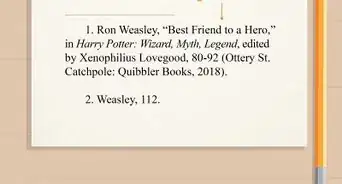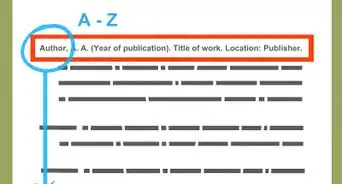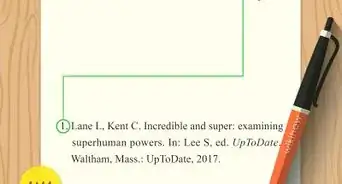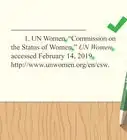This article was co-authored by wikiHow staff writer, Danielle Blinka, MA, MPA. Danielle Blinka is a Writer, Editor, Podcaster, Improv Performer, and Artist currently living in Houston, TX. She also has experience teaching English and writing to others. Danielle holds a Bachelor of Arts in English, Bachelor of Arts in Political Science, Master of Arts in English with a concentration in writing, and Master of Public Administration from Lamar University.
There are 8 references cited in this article, which can be found at the bottom of the page.
This article has been viewed 27,896 times.
Learn more...
Speeches can provide a lot of great information, but citing them can seem hard. Luckily, there are ways for you to cite that information. If you find the speech in a book, then you can cite the book as an edited book, using the correct writing style. Otherwise, you can follow the speech citation guidelines for the style guide you're using. Also, you can cite a speech in-text in the same way you would any other source.
Steps
Using MLA Format
-
1Write the speaker’s name with the surname first. The last name will always go first. For more than 1 source, put them in alphabetical order by last name. Put a period after the first name. For example, you may have heard a speech about building a robot given by an engineer named Alex Weber.[1]
- If the speech had two authors, you'd alphabetize it using the first author's last name. Then, write "and" and the second author's name. For example: Lopez, Ana and Sam Robinson.
- If you found the speech in a book, then you can format your citation for a book, using the book’s information.
- You’d start your citation like this: Weber, Alex.
-
2Include the speech title with quotation marks around it. Use the speech title as it’s listed on the program for the event. It may also be listed on the speech materials, such as presentation notes. Put a period after the speech title.[2]
- For example, you might find Alex Weber’s speech titled as “Building a Robot.”
- In cases where there is no speech name given, you can note this by giving it an appropriate title. For example, “Keynote Speech at National Robotics Conference.” In this case, you’re telling the audience that the information is from an unnamed speech you heard the author give at the National Robotics Conference.
- Your citation would like like this so far: Weber, Alex. "Building a Robot."
Advertisement -
3Provide the name of the event followed by a comma. This is where the speech occurred. You’ll want to use the name of the conference, meeting or other type of educational event.[3]
- For example, Alex Weber may have been presenting at the National Robotics Conference, which is the name you’d use.
- If you’re citing a class lecture, you can list the course name and course number for this entry.[4]
- At this point, your citation should look like this: Weber, Alex. "Building a Robot." National Robotics Conference,
-
4Give the name of the host organization followed by a comma. This is the group that is hosting the conference, meeting or event where you heard the speech. For example, the National Robotics Conference might be organized by the Center for Robotics.[5]
- For a class lecture, you’d use your university.[6]
- Your citation should now look like this: Weber, Alex. “Building a Robot.” National Robotics Conference, Center for Robotics,
-
5Include the date of the conference as day, month and year. You should write out the full name of the month rather than abbreviating it. Use the date when the speech was delivered, even if you watched a recording of it later. End it with a comma.[7]
- Here's an example of the citation up to this point: Weber, Alex. “Building a Robot.” National Robotics Conference, Center for Robotics, 8 January 2018,
-
6Provide the venue, along with the city where it’s located. The venue is the place where the speech was given. For example, the conference might have taken place at the George R. Brown Center in Houston, TX. Separate the venue and the city with a comma, and place a period after the state.
- You do not need to include the city if it’s specified in the name of the venue.[8] As an example, you would not need to specify Houston, TX, if the venue name was Houston Civic Center.
- This citation would like like this so far: Weber, Alex. “Building a Robot.” National Robotics Conference, Center for Robotics, 8 January 2018, George R. Brown Center, Houston, TX.
-
7Complete the entry with the type of speech, such as keynote or lecture. The potential speech descriptors include keynote speech, lecture, guest lecture, conference presentation, address, and reading.[9] The type of speech should be listed in the conference or meeting program. You can also ask the event organizer or speaker. Put a period at the end of the citation.
- Your final citation will look like this: Weber, Alex. “Building a Robot.” National Robotics Conference, Center for Robotics, 8 January 2018, George R. Brown Center, Houston, TX. Keynote Address.
Following APA Format
-
1Look for a transcript of the speech in a book or journal. In APA, you don’t cite a speech itself. Instead, you’ll need to cite a transcript or video presentation of the speech. Start by looking for a transcript in a book, journal, website, or similar resource. You can also check online databases.[10]
- If you can't find a transcript, you can look for a video of the speech. As another alternative, you can look for a book that uses excerpts of the speech or look for the sources the speaker used to support the material in the speech, which you can use instead of the speech itself.
- If you find your transcript, you can cite the speech appropriately using the format of an edited book, article, or website.
- For example: Lamar, Amy. Influential speeches on robotics. Atlanta, GA: B&B Publishers.
-
2Start with the author’s name for a video or website. You should always put the last name first and in alphabetical order. Place a period after the name. For example, let’s say you found Malik Jackson’s speech about repairing surgical machines on the website for the Center for Robotics. You’d write “Jackson, Malik.”
- This works for both a recording of the speech or a transcript.
- If you found the speech on YouTube, you should start your citation entry with the name of the posting account.[11]
- Your citation should look like this so far: Jackson, Malik.
-
3Include the year and month of the speech was uploaded in parentheses. Separate the year and month with a comma. In some cases, this might be the same date the speech was delivered. However, the date that’s most helpful for the reader is the upload date, which will help them find the video if they want to follow up on the sources you used. Put a period after the date.[12]
- For instance, the Center for Robotics may have uploaded Malik Jackson’s speech on June 3, 2018, right after its delivery.
- Here's an example: Jackson, Malik. (2018, June).
-
4Write the title of the speech in italics. The transcript or video that you are citing should provide the title of the speech.[13] To aid the reader in finding this source, use the title of the video or transcript, as provided. Put a period after the title.[14]
- If you watched a video of the speech, label it as a video file after the title, like this: [Video file]. In this case, you should put your period after [Video file].
- For example, your citation might look like this so far: Jackson, Malik. (2018, June). Repairing Surgical Machines [Video File].
-
5Put the website where you retrieved the speech followed by a period. It’s best to copy and paste the link to the site. Otherwise, you can type it into your References page. Start the entry with “Retrieved from” then write the link.[15]
- Your final entry might look like this: Jackson, Malik. (2018, June). Repairing Surgical Machines [Video File]. Retrieved from www.centerforrobotics.com/speeches/repairing_surgical_machines.
Citing in Chicago Style
-
1Write the last name of the speaker followed by their first name. On the References page, you’ll always start with the last name.[16] For example, Jane Ray would be written Ray, Jane. Put a period after the name.
- You can use the name of the speaker first, no matter what your source type is. However, the rest of your citation can vary, depending on the source where you found the speech. If you found the transcript in a book, the rest of the citation should be formatted like an edited book.[17]
- Your citation should look like this so far: Ray, Jane.
-
2Give the name of the speech with quotation marks around it. The name of the speech should be included on the event program, transcript or video title. Put a period after it. For example, you might have watched a speech called “Choosing Robot Components,” given by Jane Ray.[18]
- Here's an example: Ray, Jane. "Choosing Robot Components.”
-
3Follow the title with the word “Speech,” capitalized. You should follow it with a comma. This lets the reader know that this source is a speech.
- If the speech was a class lecture, you should label it “Classroom discussion” instead of “Speech.” You should also include the name of your course.[19]
- For instance: Ray, Jane. "Choosing Robot Components.” Speech,
-
4Provide the city and state where the speech was delivered. Write out the city, but abbreviate the state. Separate them with a comma, then put another comma after the state.[20]
- Write it like this: Houston, TX,
- Your citation would look like this so far: Ray, Jane. "Choosing Robot Components.” Speech, Houston, TX,
-
5Give the date of the speech, including the month, day and year. This information should be provided in the event program or on the speech transcript. Finish the entry with a period.[21]
- The entry will look like this: Ray, Jane. "Choosing Robot Components.” Speech, Houston, TX, January 8, 2018.
-
6Add the database, if that’s where you found the speech. If you used a research database to find a transcript or video of the speech, then you need to tell that to the reader. This way the reader can use the same resource to find the source. Add a period at the end.[22]
- For instance, format it like this: Ray, Jane. "Choosing Robot Components.” Speech, Houston, TX, January 8, 2018. EBSCO Database.
-
7Provide the name of the website and web address, if you found it online. You can do this for speeches you found after an online search. For example, you might have found Jane Ray's speech on the Center for Robotics’ website. Place a period after the web address.[23]
- For example, you could write your citation like this: Ray, Jane. "Choosing Robot Components.” Speech, Houston, TX, January 8, 2018. Robot Science. http://www.centerforrobotics.com/speeches/building_a_robot.
Creating In-Text Citations
-
1Include the author’s last name in the sentence. This is the easiest way to cite a speech in-text. You don’t need to include other information if you’re using MLA.[24]
- For example, you could write it like this: “According to Weber’s research, metal components can create more durable robots than plastic components.”
- For APA, you should also include the year in parentheses after the name. You would write, "According to Ray (2018), metal components are a better option than plastic components."
- For Chicago Style, you can use endnotes to provide the rest of the source information.
-
2Provide the author’s last name in parentheses, as an alternative. If you don’t want to cite the author’s name in your sentence, you can include it after the information you’re citing. For MLA, simply put the author’s name in parentheses.[25]
- Your passage might look like this: “Studies show that metal components last 4 times as long as plastic components (Weber).”
- For APA, you should also include the year after the last name, separating them with a comma. It will look like this: (Weber, 2018).
-
3Use the book author’s last name, if you found the speech in a book. You’ll still cite the book in the same way, but you’ll use the name of the editor who compiled the speeches into a book.[26]
- For example, let’s say Amy Lamar compiled several speeches about robotics into a book, including Alex Weber’s speech. You’d include a parenthetical citation at the end of the information you took from Weber’s speech, and it would look like this: (Lamar).
- For APA formatting, you should also include the year of the publication after the author’s last name, separated by a comma. For example, (Lamar, 2018). If you’re providing a direct quote, include the page number, as well. Separate each item with a comma. For example, (Lamar, 2018, p. 45).[27]
- As above, Chicago Style will use normal endnotes.
Community Q&A
-
QuestionWhat if I am citing a speech I heard at an event I personally attended? I took an audio recording, but it is not available publicly.
 Tom De BackerTop AnswererThe audio recording is unauthorized and cannot be used in any publication. You have infringed upon the author's rights already by recording it, and citing is would be second infringement. Most public speakers have their speeches written out, and that text is protected by copyright. So you can't cite this speech, not without permission from the author.
Tom De BackerTop AnswererThe audio recording is unauthorized and cannot be used in any publication. You have infringed upon the author's rights already by recording it, and citing is would be second infringement. Most public speakers have their speeches written out, and that text is protected by copyright. So you can't cite this speech, not without permission from the author.
References
- ↑ https://owl.english.purdue.edu/owl/resource/747/09/
- ↑ https://owl.english.purdue.edu/owl/resource/747/09/
- ↑ https://owl.english.purdue.edu/owl/resource/747/09/
- ↑ https://www.lib.sfu.ca/help/cite-write/citation-style-guides/mla/lectures-speech-reading-address
- ↑ https://owl.english.purdue.edu/owl/resource/747/09/
- ↑ https://www.lib.sfu.ca/help/cite-write/citation-style-guides/mla/lectures-speech-reading-address
- ↑ https://owl.english.purdue.edu/owl/resource/747/09/
- ↑ https://owl.english.purdue.edu/owl/resource/747/09/
- ↑ https://owl.english.purdue.edu/owl/resource/747/09/
- ↑ http://blog.apastyle.org/apastyle/2009/10/how-to-cite-a-speech-in-apa-style.html
- ↑ http://libraryfaqs.cu-portland.edu/faq/22402
- ↑ http://blog.apastyle.org/apastyle/2016/02/how-to-cite-a-ted-talk-in-apa-style.html
- ↑ http://libraryfaqs.cu-portland.edu/faq/22402
- ↑ http://blog.apastyle.org/apastyle/2016/02/how-to-cite-a-ted-talk-in-apa-style.html
- ↑ http://libraryfaqs.cu-portland.edu/faq/22402
- ↑ https://library.menloschool.org/chicago/speech
- ↑ https://library.menloschool.org/chicago/speech
- ↑ https://library.menloschool.org/chicago/speech
- ↑ https://library.menloschool.org/chicago/speech
- ↑ https://library.menloschool.org/chicago/speech
- ↑ https://library.menloschool.org/chicago/speech
- ↑ https://library.menloschool.org/chicago/speech
- ↑ https://library.menloschool.org/chicago/speech
- ↑ https://www.lib.sfu.ca/help/cite-write/citation-style-guides/mla/lectures-speech-reading-address
- ↑ https://penandthepad.com/cite-speech-using-mla-format-4450320.html
- ↑ https://penandthepad.com/cite-speech-using-mla-format-4450320.html
- ↑ https://penandthepad.com/cite-speech-apa-1310.html
About This Article
To cite a speech in MLA format, start by writing the speaker’s last name, followed by the first name and a period. Then, write the name of the speech title with quotation marks around it. Put a period after the speech title, making sure that the period goes inside the quotation mark. After that, list the name of the event where the speech occurred, the name of the host organization, and the date of the event, all separated by commas. Following the date, you’ll need to list the venue and the city and state where it’s located, with a period after the state. Finish by writing the type of speech you’re citing, such as “Keynote Address” or “Lecture.” To learn more, like how to cite a speech in APA or Chicago Style, read on!
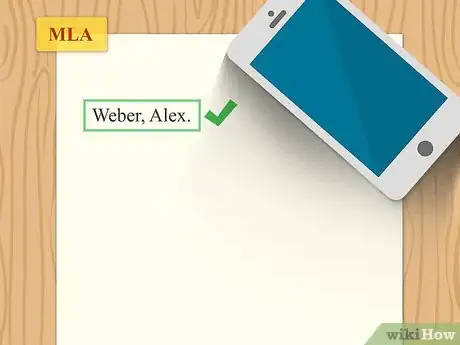
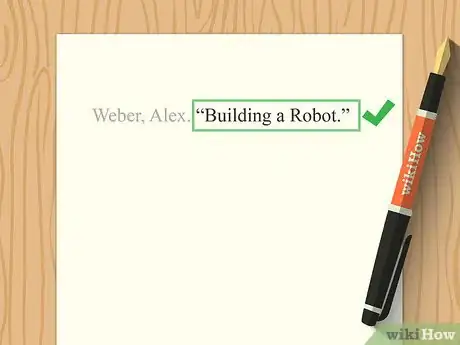
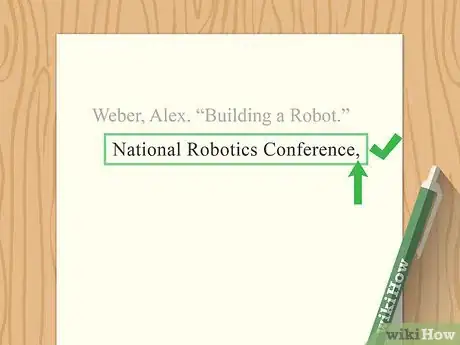
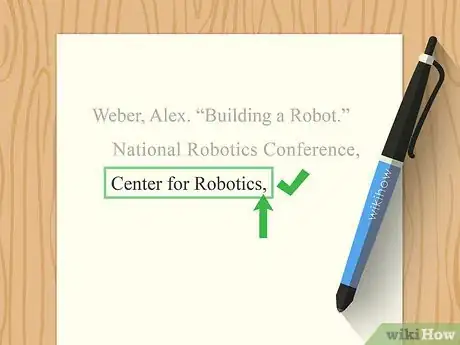

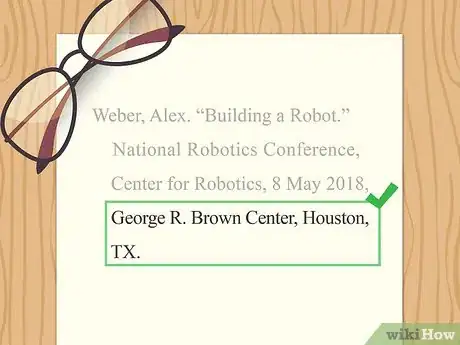
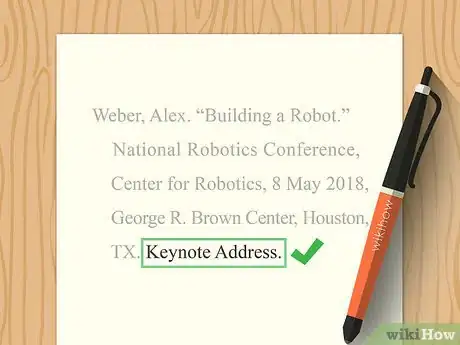
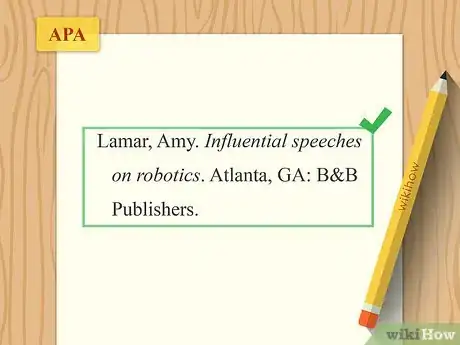

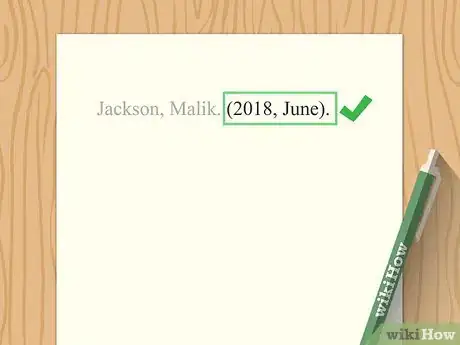
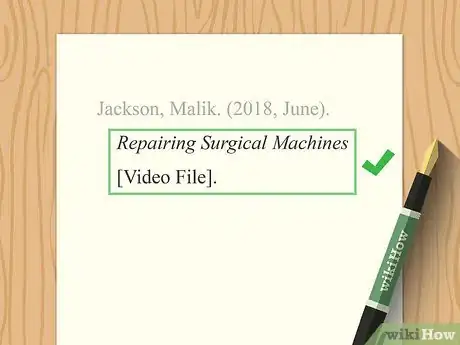
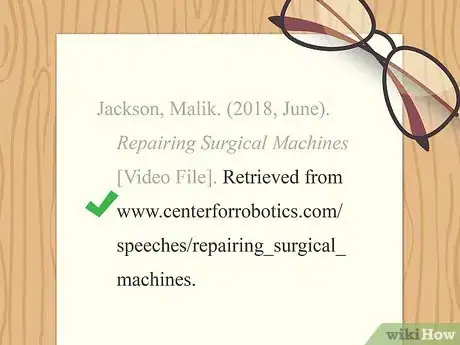
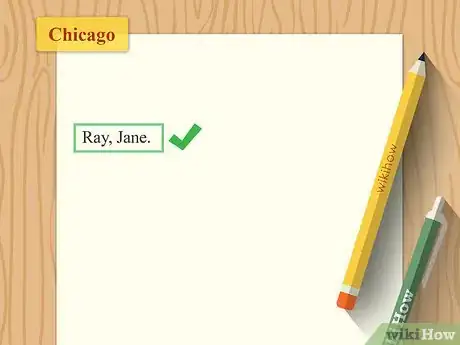

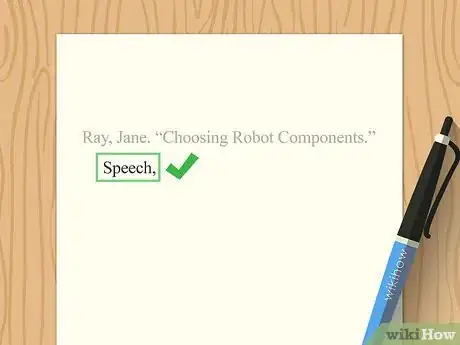
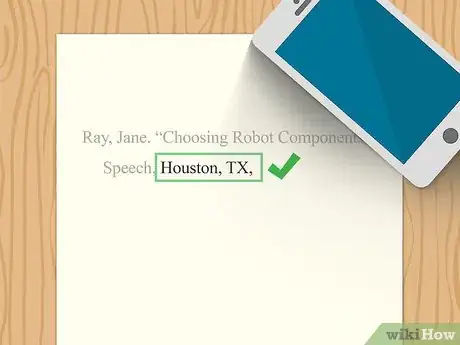
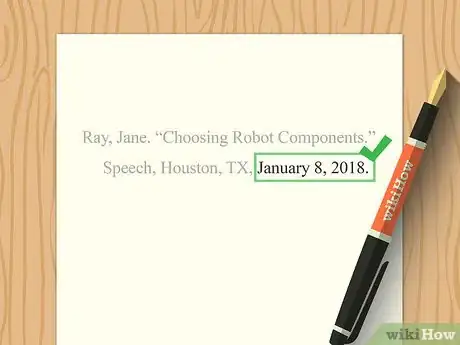
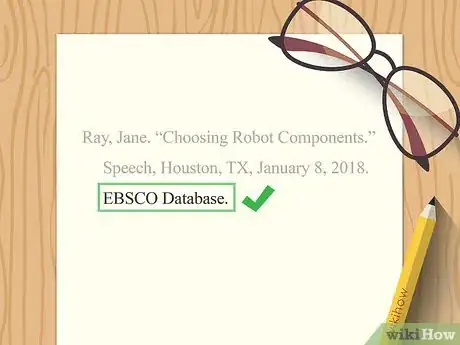

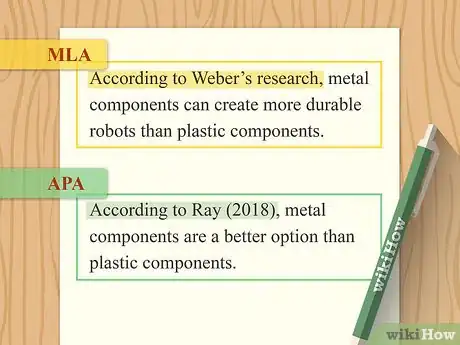

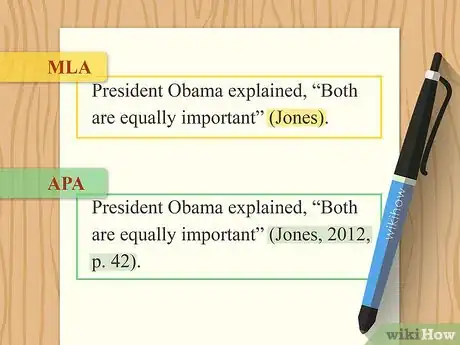





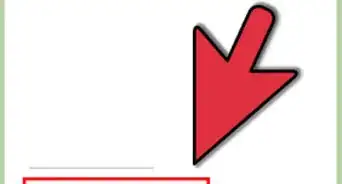




-Step-18.webp)
